Artists
Gerard van
Opstal (1594
or 1604-1668)
Flemish ivory sculptor
Do you think that you may own an ivory sculpture by Gerard van Opstal? We authenticate, appraise, research and issue certificates of authenticity (COA) and provide consultations for all ivory sculptures by Gerard van Opstal.
There is some confusion as to whether Gerard van Opstal was born in Brussels in 1594, or in Antwerp in 1604. He died in Paris in 1668. He studied under the Flemish artist, Niklaas Diodone. Opstal was also the partner and son-in-law of the Antwerp sculptor, Hans van Mildert. Between 1635 and 1636, Opstal was accepted into the Guild of St. Luke in Antwerp where he specialized in ivory carving.
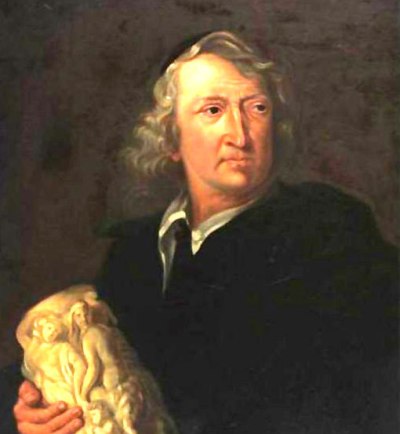
Portrait of Gerhard van Opstal holding a carved ivory
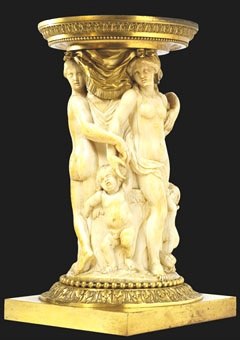
A Carved Ivory Cylindrical Tankard Sleeve of the Three Graces,1605-1668, ivory, 35 cm.
Opstal was an established sculptor in Antwerp by 1642. The city's magistrate contracted him to finish van Mildert's Christ for the Calvary group on Falconplein. Soon thereafter, Opstal moved to Paris at the invitation of Cardinal de Richelieu. He was employed by the decorative sculptor, Sarazin, and contributed many stone and marble carvings for the court of Louis XIV. These carvings can be seen at the Palais de Louvre, the Palais de Tuileries, Rene de Longueil's Chateau de Maisons, Hotel Lambert, the Hotel Carnavalet, and the Palais Royale. Van Opstal's most well known sculptural decoration in Paris was for Porte Saint-Antoine. The tomb for Jean-Baptist Lambert, located in the church of the Incurables in Paris, is at least one of the tombs Opstal carved in marble.
In 1651, Opstal was awarded the title sculpteur des batiments du roi, or Sculptor of the King's Buildings. Opstal's specialization was carving low-relief friezes with classical mythological themes. These friezes consisted of tritons, nereids, and centaurs and decorated may palaces and hotels around Paris.
In addition to stone and marble, Van Opstal was also prized for his dramatically carved ivory reliefs. His style is indebted to ancient Roman sarcophagi, the Renaissance, the lavish Baroque style inspired by Peter Paul Rubens and Francois Du Quesnoy, and the dominant elements of the French classical style that was emerging during the 1650's and 1660's at Vaux-le-Vicomte and Versailles where Opstal also worked as an assistant. King Louis XIV possessed 17 of Opstal's reliefs.
The above sculpture is an ivory tankard sleeve exhibiting the Three Graces as they dance with winged putti. The top and base are gilt-bronze with bead and acanthus borders. A ribbon of fabric swirls between the Rubenesque, young women. Opstal was a founder of the Academie Royale de Peinture et de Sculpture in 1648 and the Académie Royale des Beaux- Arts in Paris. He was repeatedly appointed rector of the academy and held this rector's position at the time of his death in 1668.
Apollo and Marsyas displays the Greek God Apollo flaying the satyr, Marsyas. Marsyas has lost to Apollo in a musical competition in which the punishment is flaying. In this sculpture Marsyas is tied to a tree stump and the flaying has begun. The entire piece is carved from one piece of ivory. Opstal delighted in using subjects involved in physical struggle in order to display the muscular detail of the bodies. This relief is evident of Opstal's style from around 1640.
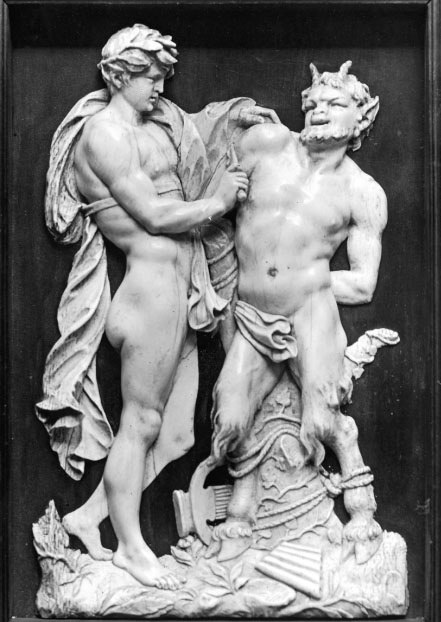
Apollo and Marsyas, 1640, ivory and bone, 8 ¾ x 5 ¾ in.
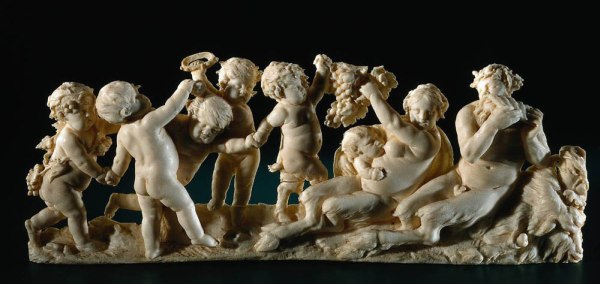
Bacchus with Satyrs and Cupids, c.1640, ivory, 12x32x2 cm
The above relief displays a feast in honor of Bacchus, a popular theme during the seventeenth century. The scene contains satyrs and nude cupids. This piece exhibits Opstal's style of carving away the entire background of the relief. Again, the style of the bodies of the cupids and satyrs is evidence of Peter Paul Rubens' influence.
The above relief was carved in Flanders around the middle of the 17th century. It is a frieze of nine putti and one infant satyr playing with two goats. Their windswept hair and plump bodies are typical of the work of Gérard van Opstal.
Opstal was ranked second to none of any of his fellow sculptors of the time. His style is extremely naturalistic and purer than that of his contemporary Faid'herbe. Opstal was a founder of the Academie Royale de Peinture et de Sculpture in 1648 and the Académie Royale des Beaux- Arts in Paris. He was repeatedly appointed rector of the academy and held this position at the time of his death in 1668.
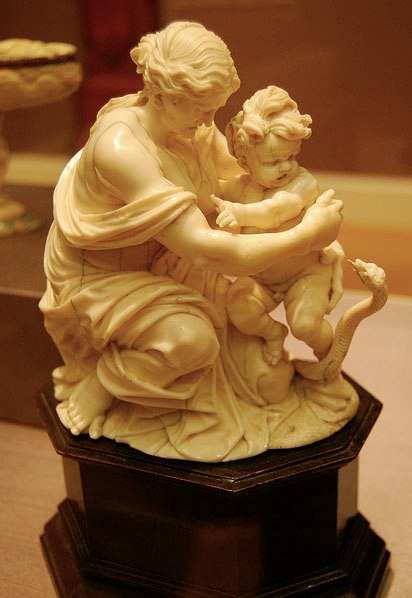
Infant Hercules and the Serpent, mid 17th century, ivory
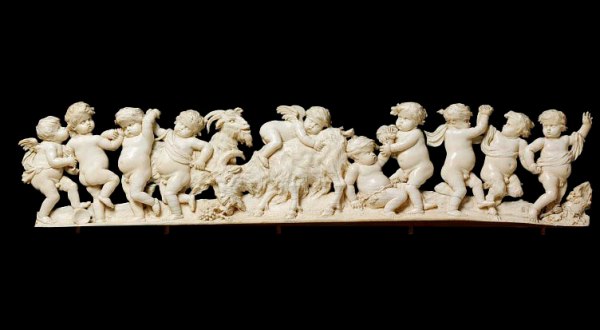
A Bacchanal of Children, Flanders, ca. 1640-1668, 14 cm x 68.5 cm.
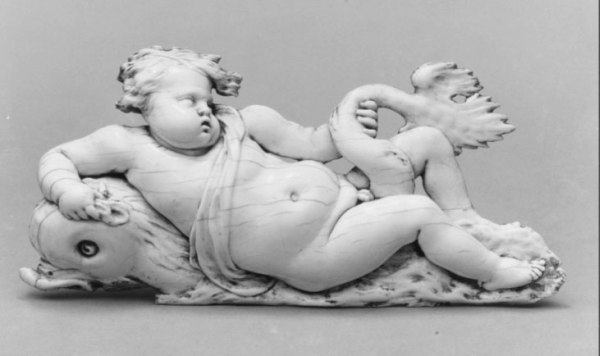
Putto on a Dolphin, mid-17th century, Paris, ivory, 4 x 8-1/2 in. (10.2 x 21.6 cm)
